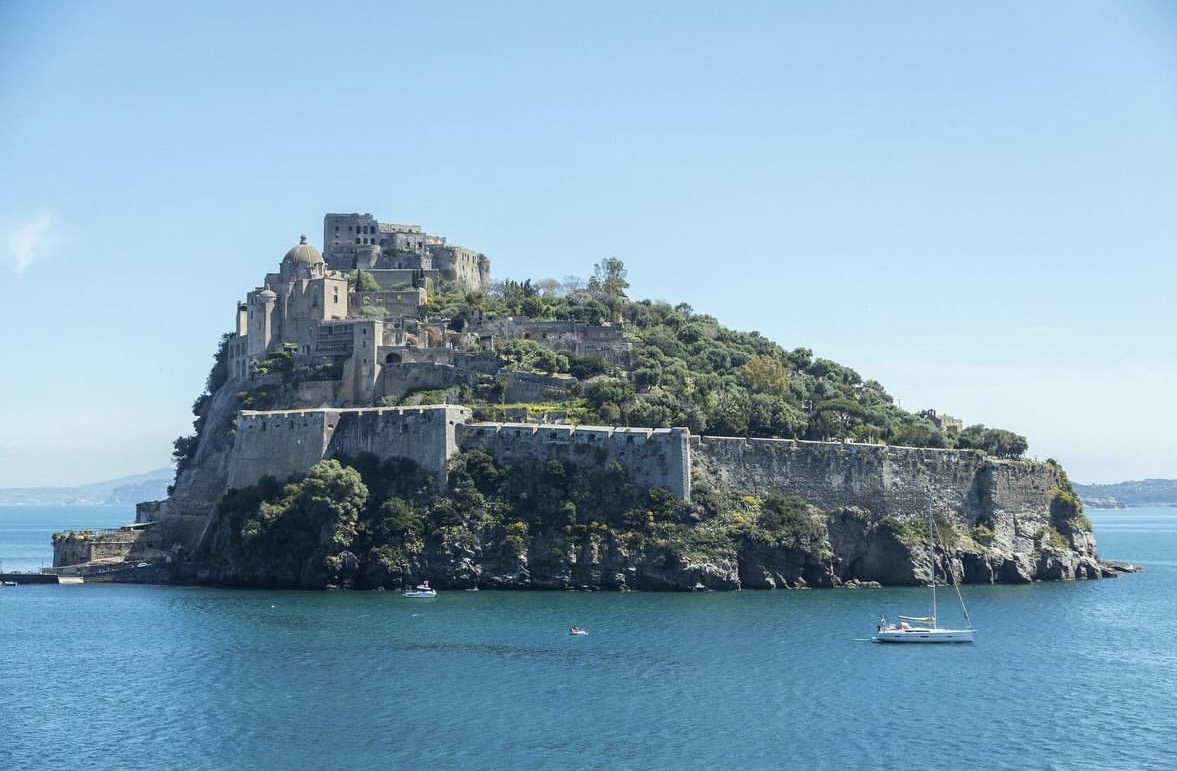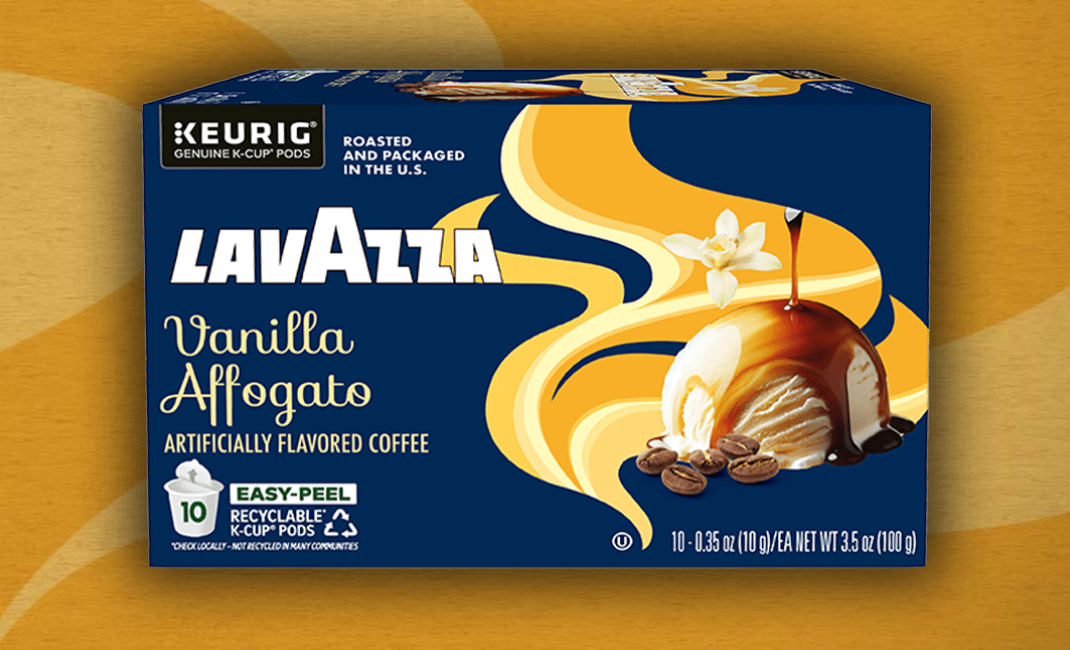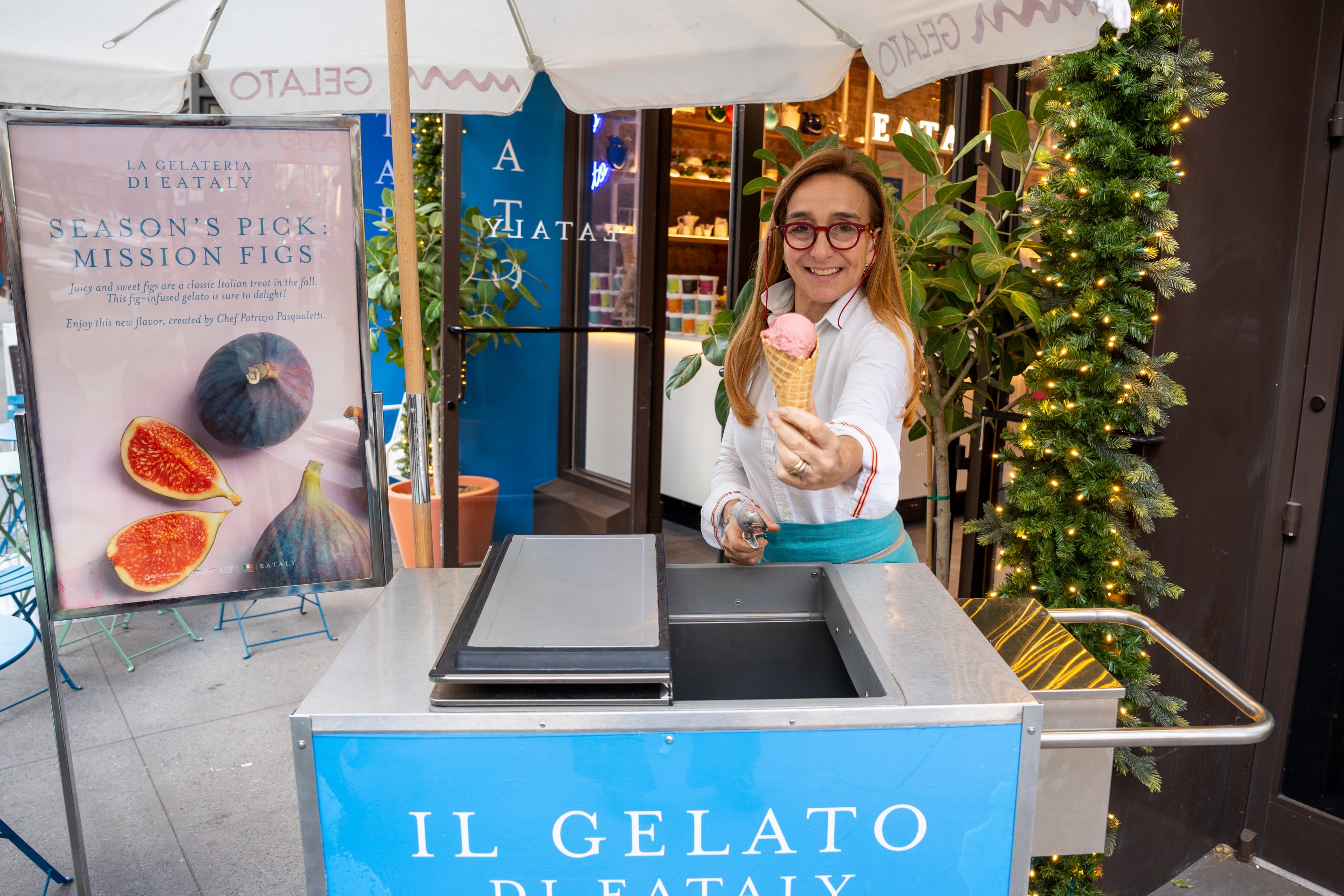Last year, when I came to Ischia, a volcanic island in the Gulf of Naples, I tried and failed to find the island’s most famous plate, coniglio all’ischitana. The plate is a whole rabbit cooked in tomatoes, wine, garlic, oil, and any herb the chef can find growing in the garden. It's nothing short of a gastronome’s dream. Needless to say, the promise of the dish remained lodged in my mind until my return.
Last week, I found myself back in Ischia, this time with my dining fate resting in the hands of my islander friends. I relied on the miraculous string-pulling of locals to find the dish, all the while I sat back lazily, pruning in the sea and sun, until I was led to the right table, the right rabbit.
Coniglio all’ischitana is often made in the mountains near the rabbit farms and mostly at homes rather than in restaurants. I’ve heard of a man who makes the dish for a select few at his home high in the mountains, but they also say that you would need a kind of clown car to make it up there, with the twists and turns of the ever-narrowing streets.
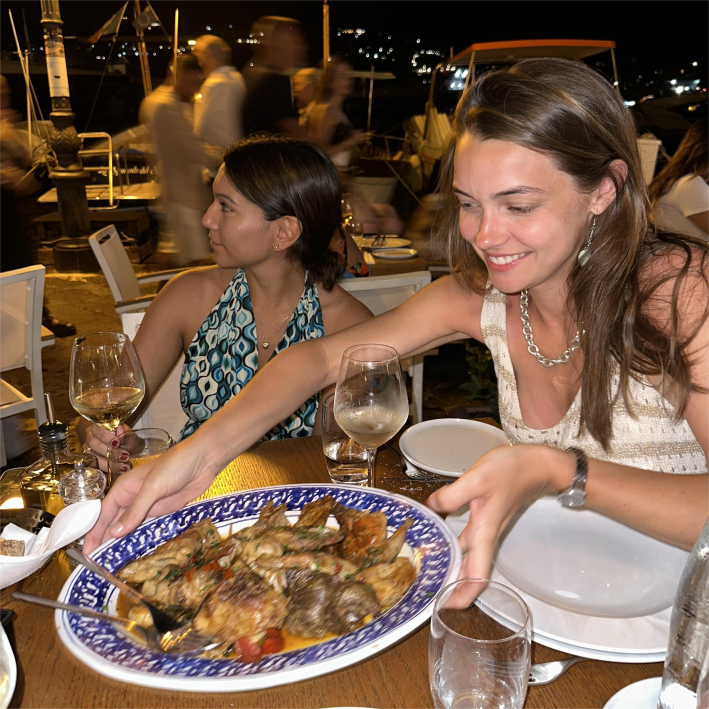
My friends run Tiramisù, a seafood restaurant on the boardwalk that’s fairly new and rapidly rising in acclaim. While their menu is entirely dedicated to the sea, the owner and chef are Ischitani, and thus had the skills and desire to prepare a real coniglio all’ischitana for a couple of guests and me.
Once we were seated our table on the boardwalk, seemingly transported from the coast to foresty folds of the Ischian mountains, they prepared for us the traditional feast: a rabbit in three courses.
The primo was a bucatini pasta made with rabbit jus. It boasted juices and delectability and foreshadowed the roast to come. I also like to think that the course mentally prepares those who are faint of tongue (a.k.a. texture sensitive) for the secondo by starting with something familiar: pasta and sauce.
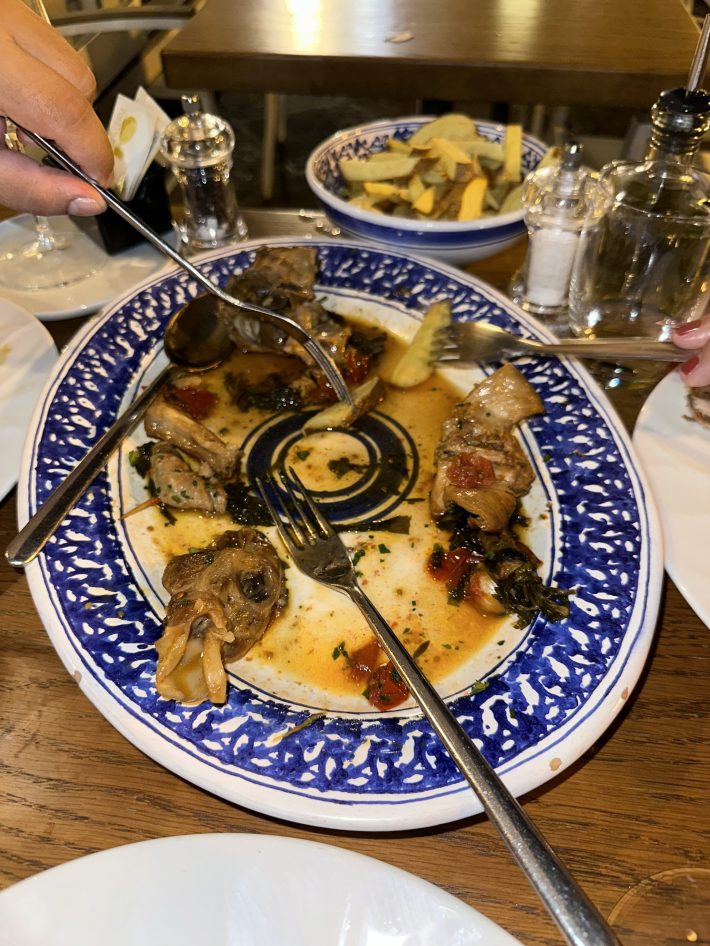
The secondo arrived shortly after, with rabbit parts placed randomly, yet with intent, across a singular platter: front and back legs, tail, ribs, lungs, heart, liver, kidneys, and the cross-sectioned head split in two so as to see and access the brain, tongue and cheek. The offal are known to the locals as the “bocconi d’oro,”, or the “golden bites” — and that they were.
It was explained to me later that a rabbit coming directly from the farm rather than from a butcher is an important factor in taste and experience. Farmed and free-range rabbits have more muscles and ligaments that soften in the roast. Their meat doesn't fall off the bone, but it's leaner, as rabbits naturally are, and the platter is a testament to the health of the animal. In coniglio all’ischitana, not one piece should be wasted or forgotten.
The last dish took an unexpected turn back up to comfort: french fries. A bowl of fries (ours were freshly cut and fried by the chef at Tiramisù) was then brought out and dumped onto the platter. The leftover roast became a kind of poutine. Munching on gravy-dipped fries, we felt that we had come back from our sensory experience.
We had dined on a rabbit fully, wholly, respectively, and prepared by Ischitani hands. Surely, I can never come back to Ischia without finding coniglio all’ischitana again.
